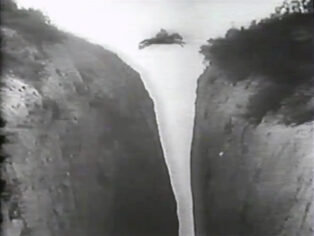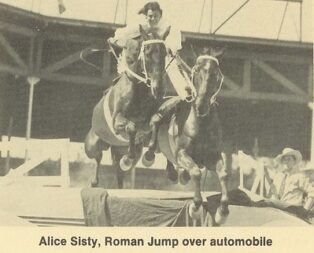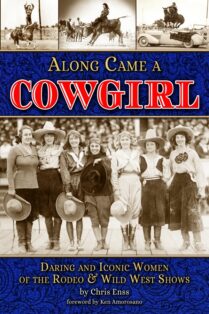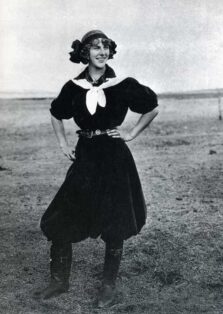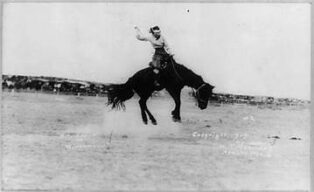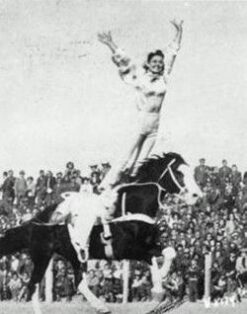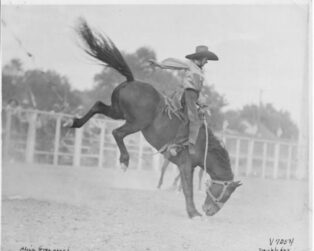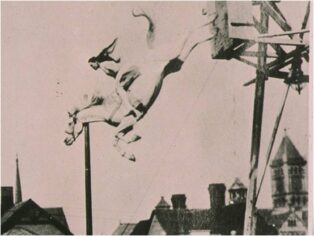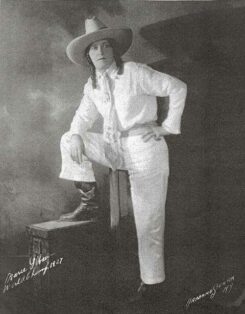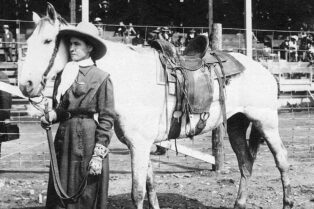Enter now to enter to win a copy of
Cowboys, Creatures and Classics: The Story of Republic Pictures
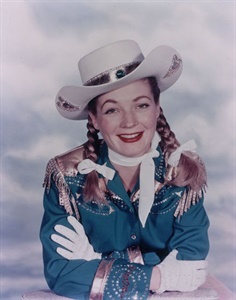
Bullseye! The Annie Oakley Show was on the air from 1954 to 1957 and Annie hit the entertainment bullseye every week with her hard riding, straight shooting, and suspense. Actress Gail Davis portrayed the Western legend. To some, Gail was only a minor flicker in the Hollywood star system. But to others, she was something special and more famous than that “other” Davis named Bette.
For more than three years she was TV’s pigtailed, fast-riding, sharp-shooting, good-looking Annie Oakley, who helped keep law and order in her hometown of Diablo through eighty-one black-and-white episodes. The series continues in re-runs for several years after that.
Davis was born in Little Rock, Arkansas and attended the University of Texas where she participated in college plays. From there she headed to Hollywood and landed her first small movie role in Romance of Rosy Ridge, a 1946 movie starring Van Johnson.
Next she had a part in If You Knew Susie with Eddie Cantor and Joan Davis at RKO. Not long after that, she began appearing as the female lead in some of the films of B-Western cowboy stars such as Allan “Rocky” Lane at Republic and Tim Holt at RKO.
She served herself well playing opposite Roy Rogers in 1949’s The Far Frontier. The movie also featured a couple of other figures who also would go on to make their marks in early TV Westerns: Clayton Moore (The Lone Ranger) and Andy Devine (“Jingles” on the Wild Bill Hickok Show).
Gene Autry spotted her, was impressed, and signed her to a contract with his Flying A Productions. Davis appeared as Autry’s leading lady in several of his theatrical movies.
When The Gene Autry Show was launched on television in the summer of 1950. Davis showed up in numerous episodes during the series’ first three years. Then Autry put Davis in her own show the “Annie Oakley” series which was produced by Flying A.
Also in the cast was Jimmy Hawkins as Annie’s brother Tagg and Brad Johnson as deputy sheriff Lofty Craig. After a taste of Annie’s deadeye shooting and Lofty’s hard-hitting fists, not many outlaws stayed around Diablo too long.
Appropriately, Annie’s horse in the series was named Target.
Flying A press agents claimed Davis grew up shooting and riding just like the real Annie Oakley. But in the early 1950s interview, Davis said she learned to ride and shoot after coming to Hollywood. Obviously, she picked up on it all quickly, because her shooting act became a part of Autry’s live touring show.
Gail Davis passed away in March 1997 of cancer. She was seventy-one when she died.
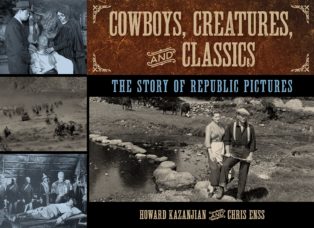
Cowboys, Creatures, and Classics 3
I'm looking forward to hearing from you! Please fill out this form and I will get in touch with you if you are the winner.
Join my email news list to enter the giveaway.
"*" indicates required fields
To learn more about the talented actress who portrayed Annie Oakley read
Cowboys, Creatures and Classics: The Story of Republic Pictures

